When looking at Keith Haring’s body of work, one can see that a lot of the same imagery keeps on re-occurring such as: babies, dogs and flying saucers. We have made a little visual dictionary of Keith Haring imagery for you to read and interpret when looking at your favourites Keith Haring pieces.
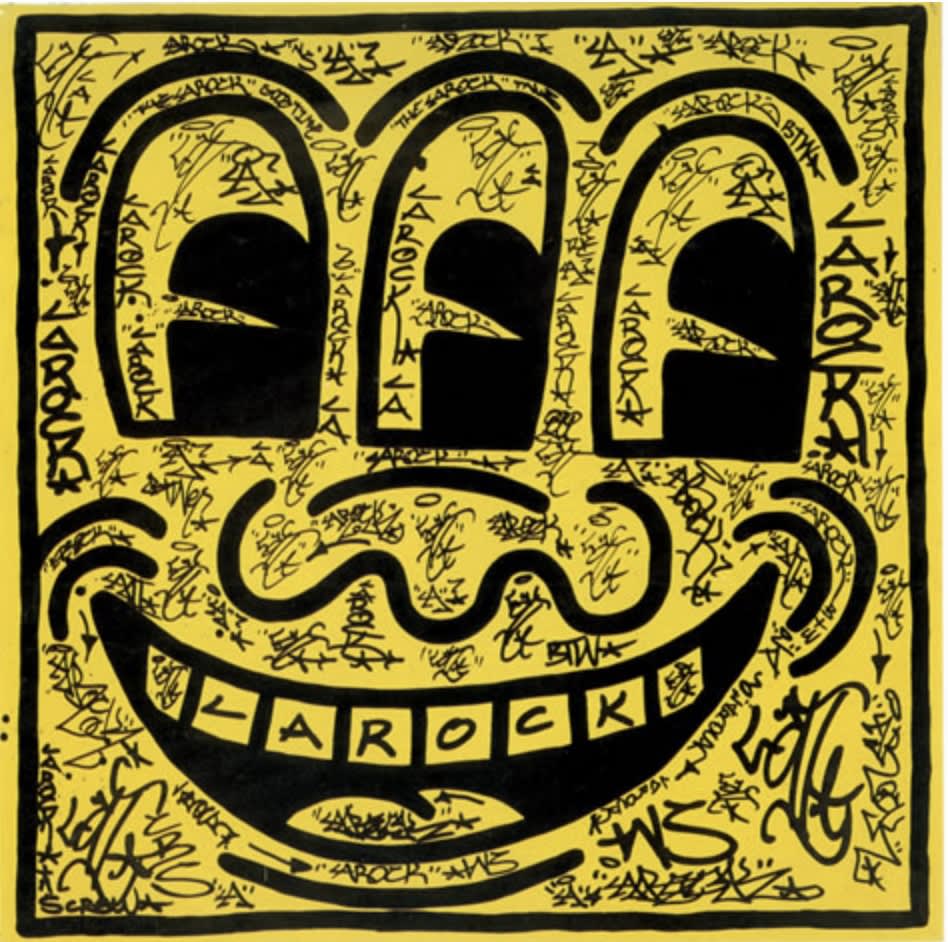
Three-Eyed Face
Haring initially developed the three-eyed face by accident, as he was painting a smiley face, he left too much room between the eyes, so he simply added a third one. The public began speculating and interpreting it as a spiritual reference, so Haring simply went with it.
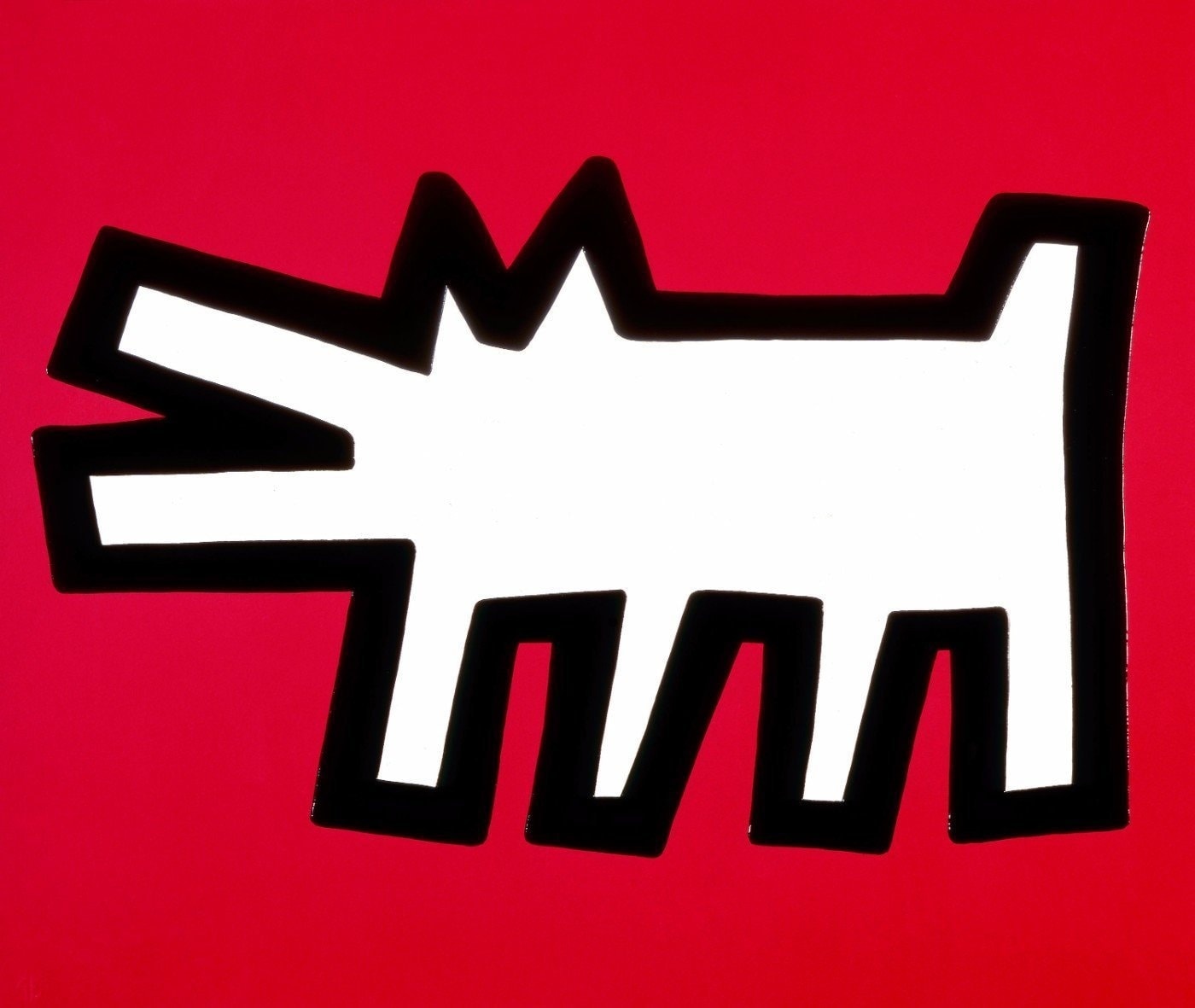
Dog
Dogs are one of Haring’s most famous images. It first appeared in the subway drawing series between 1980 and 1985. It Started as a mythical creature it latter developed into a dog, it stands for all abuses of power, government, and oppressive regimes that demand obedience and represents authority.
Hearts
Hearts are sometimes portrayed near two male two male looking figures in Haring’s work, supporting acceptance and rights for all.
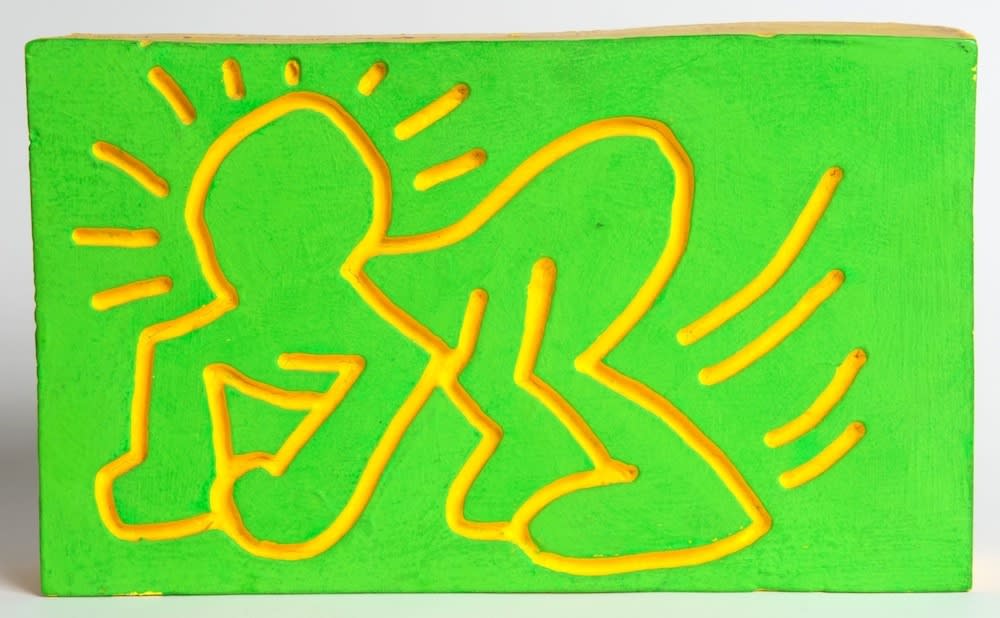
Baby
A “radiant baby” is one of the most popular images associated with Keith Haring. The figure represents youthful innocence, goodness, potential and purity. In Haring’s earlier works, the baby figures seems to be skinner compared to his works produce in the late 70s and early 80s where the figures are plumper.
Nuclear
Growing up and living in the 70s and 80s, Haring was worried about the effects of nuclear accidents. In 1979, the Three Mile Island accident was partial meltdown of a reactor of the Three Mile Island Nuclear Generating happened only fifty miles away from his hometown. Later in 1986 Chernobyl became an international disaster. Haring represents his anti-nuclear values by using neon or florescent colours.
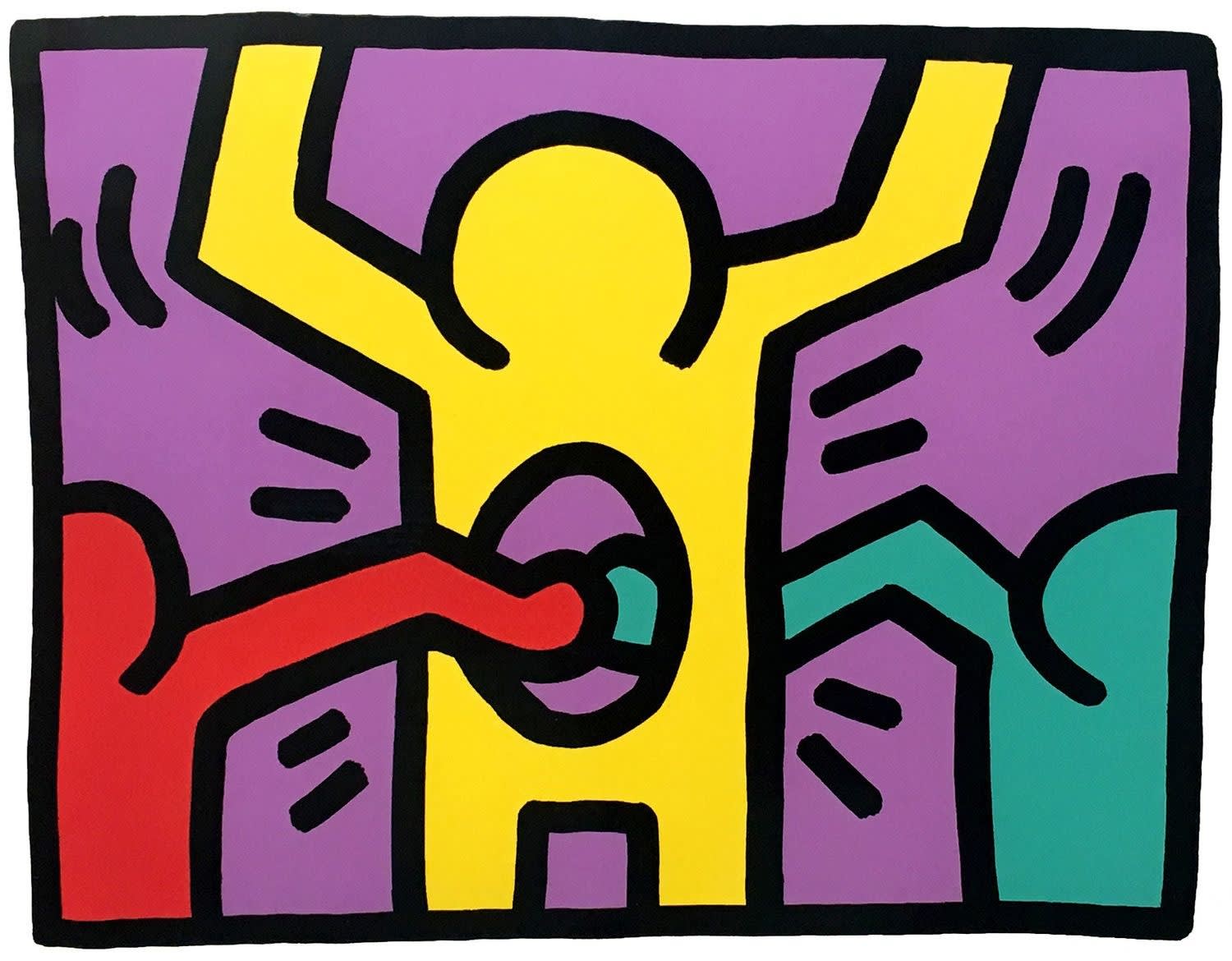
Figures with holes in their bodies
Human figure with hole in the middle reference the murder of John Lennon on December 1989. There is no strict symbolism here, but this figure may suggest violence and spirituality. He quotes: “Someone came into the Mudd Club and told us that John Lennon had been shoot… I woke up the next morning with this image in my head”
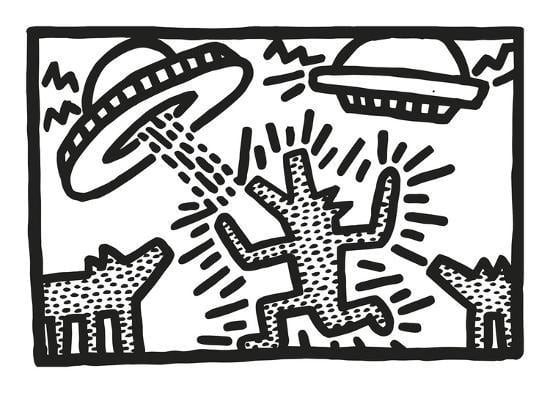
UFOs
UFOs and flying saucers represent otherness and symbolises empowerment for people outside the social norms. Although Haring usually had a sceptical position over technological, flying saucers usually have a positive meaning. “When the flying saucer zapped the babies, I put rays all around the babies, because they had now been endowed with all this power. Later on, this image became misinterpreted. People wrote that the baby has radioactive energy. That wasn’t so. The rays from the flying saucer gave this glowing power.”
The Cross
Growing up in a Christian family, Haring was rather religious as a kid. However, as he grew, Haring began critical of religion and the power of the church in society. However, the symbolism and connotations of religious scenes in Haring’s work are up to debate.

Robots and TV
Media, technology, colour, childhood
In a diary entry for March 18, 1982, the artist reflected on the significance of “Being born in1958, the first generation of the Space Age, born into a world of television technology and instant gratification, a child of the atomic age. Raised in American during the sixties and learning about war from Life magazines on Viet Nam. Watching riots on television…”

Drugs
“Crack is Wack” is an iconic mural showcasing the effects of drugs. The mural is inspired by Benny, a studio assistant working for Haring who became addicted to crack. “inspired by Benny, and appalled by what was happening in the country, but especially New York, and seeing the slow reaction (as usual) of the government to respond, I decided I had to do an anti-crack painting.”
